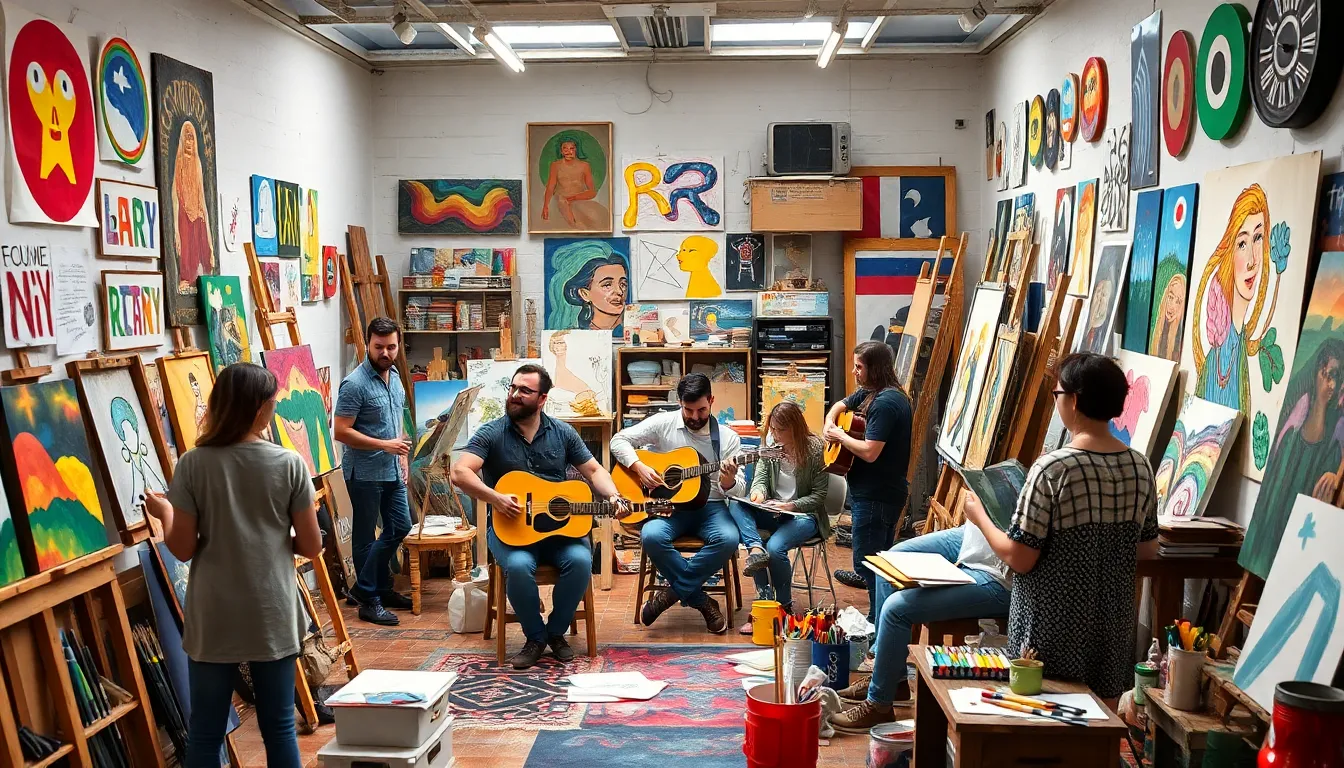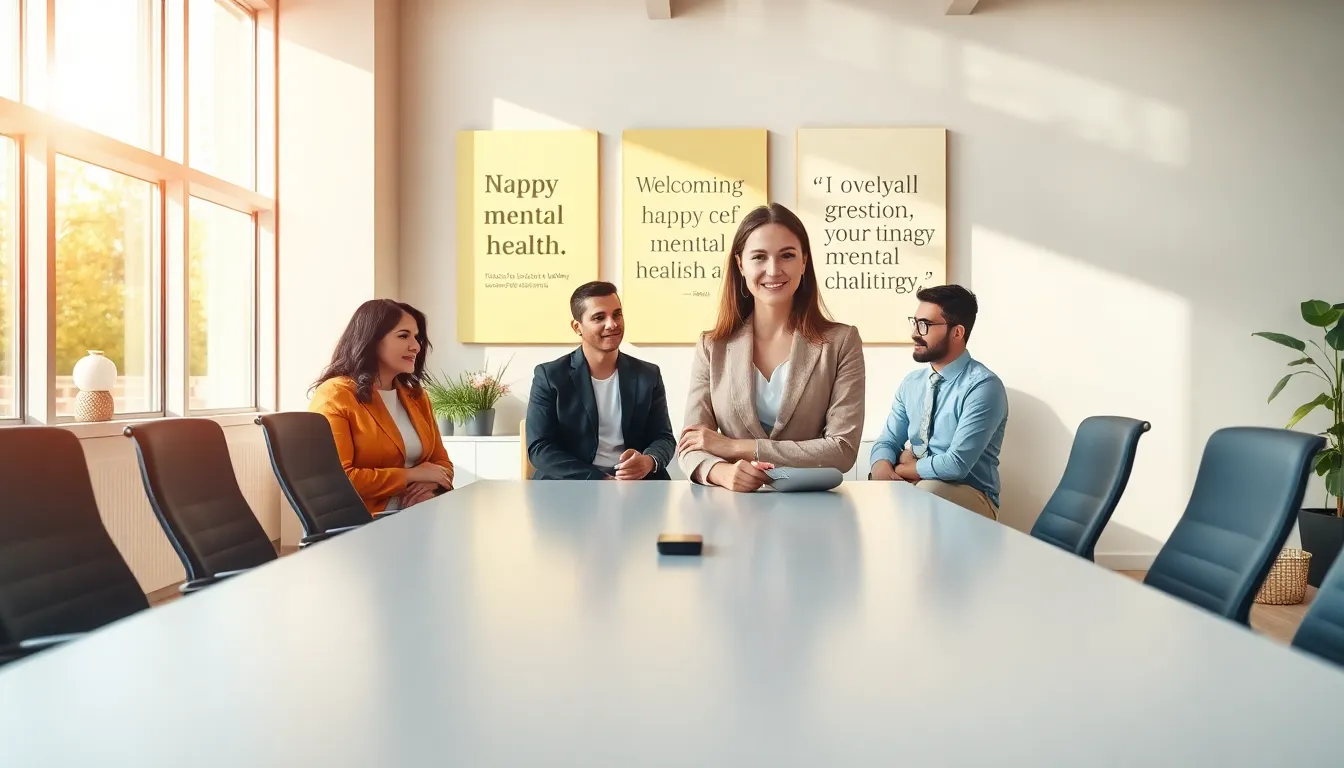Mental health and creativity share a fascinating relationship that’s as complex as a Picasso painting. While the world often views creativity as a whimsical escape, it can also be a powerful tool for mental well-being. Imagine channeling your inner Van Gogh or Shakespeare to tackle life’s challenges—who knew that doodling could double as therapy?
In a world where stress and anxiety seem to throw a never-ending party, tapping into creativity might just be the secret sauce for a healthier mind. Whether it’s painting, writing, or even baking a cake that looks like a unicorn, embracing creativity can help individuals express their emotions and find solace. So, let’s dive into how this dynamic duo can transform lives, one brushstroke or verse at a time.
Table of Contents
ToggleUnderstanding Mental Health and Creativity
Mental health and creativity often intertwine. Engaging in creative activities can enhance emotional well-being and provide a meaningful outlet for individuals.
The Connection Between Mental Health and Creativity
Creativity fosters self-expression, enabling individuals to articulate emotions effectively. Many studies indicate that creative activities, such as painting, writing, or music, contribute positively to mental health by reducing stress. Art therapy, for instance, illustrates how structured creative processes enhance emotional resilience. Engaging in these activities promotes mindfulness, drawing attention away from negative thoughts. Research highlights that creative expression can lead to improved mood and decreased anxiety levels.
The Impact of Mental Illness on Creative Expression
Mental illness significantly influences creative output. Conditions like depression and bipolar disorder often inspire unique artistic perspectives. Many artists channel their struggles into their work, allowing them to communicate complex emotions. Individuals with anxiety may create to alleviate their feelings, producing art that resonates with their experiences. The intersection of mental health and creativity often results in powerful creative expressions that can offer insights into the challenges faced. Research supports that individuals facing mental health challenges frequently produce compelling and innovative work, reflecting their inner landscapes.
Benefits of Creativity for Mental Health

Creativity significantly boosts mental health, offering various advantages. Engaging in creative activities can effectively combat feelings of anxiety and depression.
Therapeutic Effects of Creative Outlets
Artistic expression fosters emotional release. Painting, writing, or playing music provides individuals a space to explore and articulate feelings. Studies indicate such activities promote relaxation, often lowering stress levels. Engaging in creative outlets enhances focus, allowing the mind to shift away from negative thoughts. Additionally, creating something tangible boosts self-esteem and fosters a sense of accomplishment.
Case Studies of Artists and Mental Health
Numerous artists illustrate the impact of mental health on creativity. Vincent van Gogh, for instance, struggled with mental illness and created profound works that reflect his emotional turmoil. Similarly, Virginia Woolf’s writing often mirrored her battles with anxiety and depression. These examples highlight how personal struggles can drive artistic innovation, transforming pain into compelling narratives. Many contemporary artists also share their experiences, showcasing how creativity offers a platform for healing and connection with others.
Challenges Faced by Creative Individuals
Creative individuals often encounter unique mental health challenges. The stigma surrounding mental health in creative fields can create barriers to seeking help.
Stigma Surrounding Mental Health in Creative Fields
Stigma negatively impacts artists and creative professionals. Many individuals fear judgment from peers or audiences when expressing their mental health struggles. This fear can lead to isolation and reluctance to discuss issues openly. Cultural norms frequently glorify the “tortured artist” archetype, implying that suffering enhances creativity. Such perceptions discourage many from addressing their mental health needs. Artists and creators may feel pressured to maintain a façade of success and stability, complicating their journey toward seeking support.
Balancing Mental Health and Creative Pursuits
Balancing mental health with creative pursuits presents significant challenges. Many artists find it difficult to manage the emotional toll that creativity can exert. Creative activities, though therapeutic, often demand deep emotional investment, potentially leading to burnout. Time constraints and external expectations can exacerbate stress levels. Individuals thrive when they cultivate routines that integrate self-care into their creative processes. Prioritizing mental health while pursuing artistic goals forms a vital aspect of sustainable creativity. Establishing boundaries between work and rest can support both mental well-being and creative output.
Strategies to Enhance Mental Health and Creativity
Enhancing mental health and creativity involves adopting specific strategies that promote both well-being and artistic expression.
Mindfulness and Creative Practices
Mindfulness encourages individuals to focus on the present moment, which can improve both mental health and creativity. Engaging in activities like mindful painting, journaling, or sculpting fosters relaxation and self-discovery. Practitioners report reduced anxiety levels and increased emotional clarity when integrating mindfulness into their creative routines. Guided meditation can inspire new artistic ideas while helping manage stress. Contemplative practices allow creators to connect deeply with their emotions, ultimately benefiting their work.
Building a Supportive Creative Community
Creating a supportive community enhances mental health for artists and creatives. Collaborative environments allow individuals to share their struggles and successes, creating a sense of belonging. Connecting with others facing similar challenges fosters peer support and encouragement. Group activities like workshops or art classes provide a platform for constructive feedback and inspiration. Sharing experiences within a creative network decreases the stigma associated with mental health issues and promotes openness. A strong community enhances motivation, helping individuals sustain their creative endeavors while prioritizing their mental well-being.
The interplay between mental health and creativity reveals a powerful avenue for healing and self-discovery. Engaging in creative activities not only fosters emotional expression but also cultivates resilience against stress and anxiety. By embracing creativity as a therapeutic tool, individuals can unlock new perspectives on their struggles and transform them into meaningful art.
Building supportive communities and integrating mindfulness into creative practices further enhance this relationship. As artists and creators navigate their mental health journeys, they can find solace and strength in their craft. This dynamic connection serves as a reminder of the profound impact creativity can have on overall well-being, encouraging everyone to explore their artistic potential for a healthier mind.






